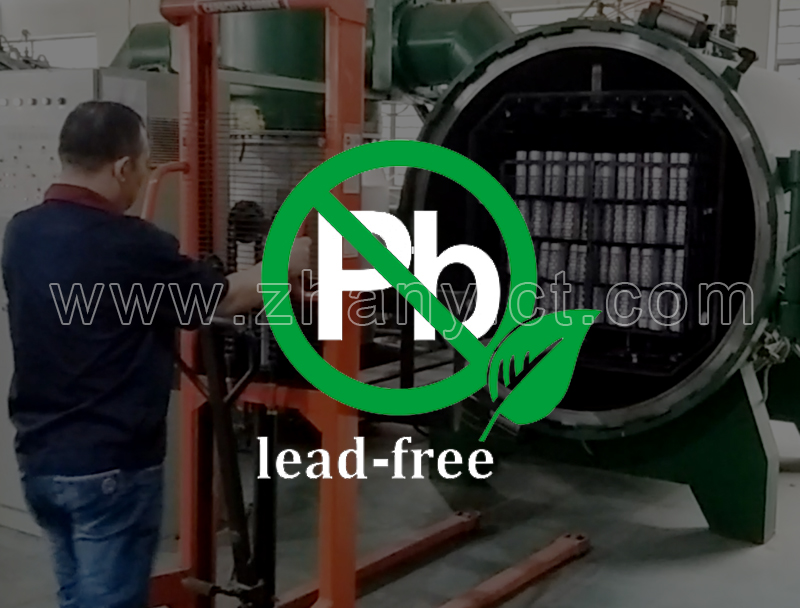Unveiling the Secret of Lead-Free Vacuum Sealing in Stainless Steel Insulated Cups—Core Process Comparison
Every cup has a story, and life has its warmth. Hello everyone, and welcome to "Dong Dong's Cup Talk" As global markets increasingly prioritize health and environmental protection, the water cup industry has been undergoing continuous upgrades in equipment and processes. https://www.zhanyict.com/en/ProductsDetail-VB-10530.htmlThis is particularly evident in the stainless steel cup sector, where the vacuum sealing process is a core focus. Today, we’ll delve into this topic. To make the content more digestible and prevent reader fatigue, I’ve divided it into several standalone articles.
I. Core Process Comparison: Conventional Lead Sealing vs. Lead-Free Vacuum
Differences in Process Principles and Parameters:
Conventional Vacuum Sealing (Traditional Lead Sealing Process):
- Sealing Medium: https://www.zhanyict.com/en/ProductsDetail-VB-10530.htmlUses leaded glass beads (typically containing 20%-30% or more lead) as the sealing material.
- Sealing Temperature: Relatively low, generally in the range of 380°C - 420°C. The presence of lead lowers the melting point of the glass, making it easier to melt and form a seal.
- Processing Time: Relatively short. Due to the lower temperature, the heating and cooling cycle is typically completed within 2-3 minutes per unit.
Lead-Free Vacuum Sealing:
- Sealing Medium: Uses lead-free eco-friendly glass beads (primarily composed of borosilicate, etc.), strictly eliminating heavy metals such as lead and cadmium.
- Sealing Temperature: Significantly higher, usually requiring 480°C - 520°C or even more. Lead-free glass demands higher temperatures to achieve ideal fluidity for sealing.
- Processing Time: Relatively longer. Higher temperatures necessitate more precise temperature control, extended heating time to ensure complete melting and sealing, https://www.zhanyict.com/en/ProductsDetail-VB-10530.htmland longer cooling time to prevent deformation or glass cracking due to thermal stress. A full cycle typically takes 4-6 minutes or even longer.
Vacuum Level and Insulation Performance:
- Theoretical Core: The vacuum level (i.e., the degree of rarefaction of residual gas in the vacuum interlayer) is the key physical factor determining insulation performance. As long as a high vacuum level (typically ≤5x10⁻³ Pa) is achieved, https://www.zhanyict.com/en/ProductsDetail-VB-10530.htmlheat conduction and convection are significantly suppressed. In theory, the insulation effect should not fundamentally differ based on whether the sealing medium is leaded or lead-free glass.
Practical Influencing Factors:
- Process Stability: The higher temperatures of the lead-free process place greater demands on equipment precision (e.g., uniform furnace temperature, stable vacuum system) and operational skills. Improper control may lead to poor sealing or accelerated vacuum degradation, https://www.zhanyict.com/en/ProductsDetail-VB-10530.htmlindirectly affecting long-term insulation performance.
- Material Tolerance: Higher temperatures impose stricter requirements on the oxidation resistance and high-temperature deformation resistance of stainless steel tubes (e.g., 304, 316). Inferior tubes are more likely to release trace gases or oxidize at high temperatures, https://www.zhanyict.com/en/ProductsDetail-VB-10530.htmlpotentially slightly affecting the ultimate vacuum level.
When the process is mature and well-controlled, the vacuum level and insulation performance of insulated cups sealed with lead-free glass beads can fully match those of high-quality products using traditional lead sealing. https://www.zhanyict.com/en/ProductsDetail-VB-10530.htmlDifferences in insulation performance are more attributable to the vacuum level itself, the design of the mouth seal, and the cup structure, rather than directly to the use of "leaded" or "lead-free" materials.
Processing Efficiency and Cost:
- Time Cost: As mentioned, the processing time per unit for the lead-free process is significantly longer than for traditional lead sealing (approximately 50%-100% longer).
- Equipment and Energy Costs: The lead-free process requires higher-power heating equipment, more precise temperature control systems, furnace materials with better high-temperature resistance, and more robust cooling systems. https://www.zhanyict.com/en/ProductsDetail-VB-10530.htmlHigher operating temperatures and longer processing times also result in significantly increased energy consumption costs.
- Material Costs: Lead-free eco-friendly glass beads are generally more expensive than traditional leaded glass beads. Additionally, to ensure no deformation or gas release at higher temperatures, the quality requirements for stainless steel tubes are also higher.
- Overall Cost: https://www.zhanyict.com/en/ProductsDetail-VB-10530.htmlThe total production cost of the lead-free vacuum sealing process is significantly higher than that of the traditional lead sealing process.

There are stories in the cup, life has warmth, use a good cup to enjoy a healthy life. We provide OEM business to more than 100 companies around the world, and produce more than 3 million pieces of various stainless steel/plastic cups and pots annually. Honoring promises, keeping reputation, ensuring quality and quantity, and delivering on time are our service principles and our professional commitment. Dongguan Zhan Yi Commodity Technology Co.,Ltd. welcomes global merchants to conduct on-site factory inspections and in-depth cooperation.